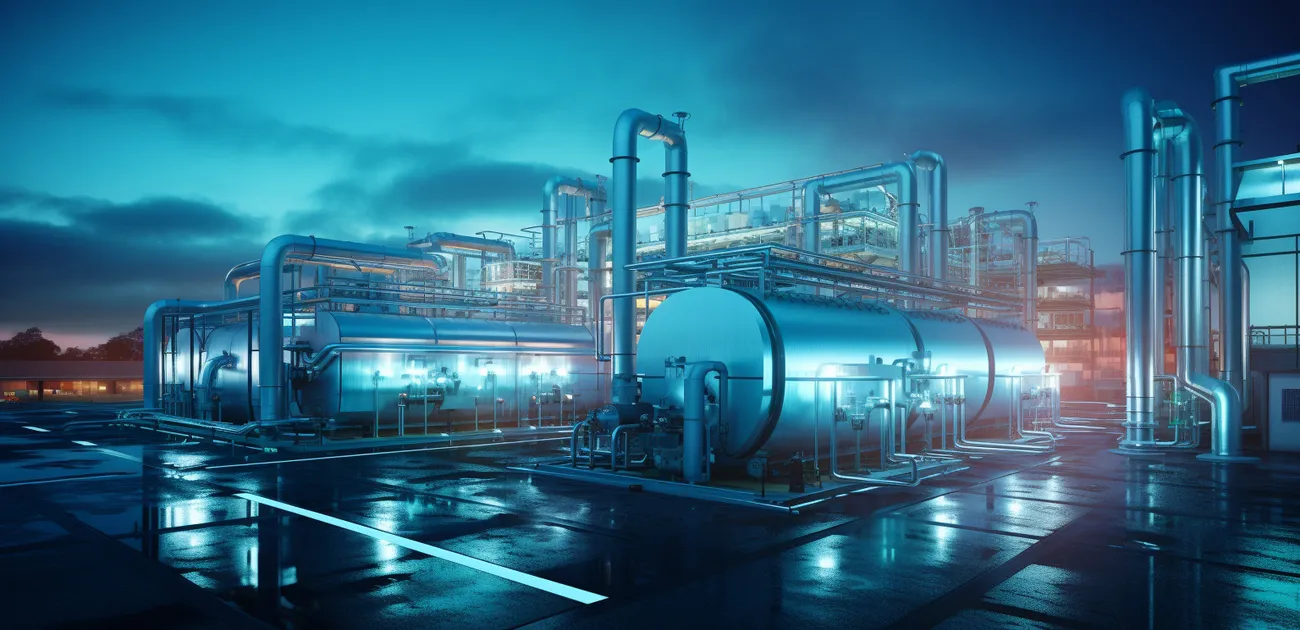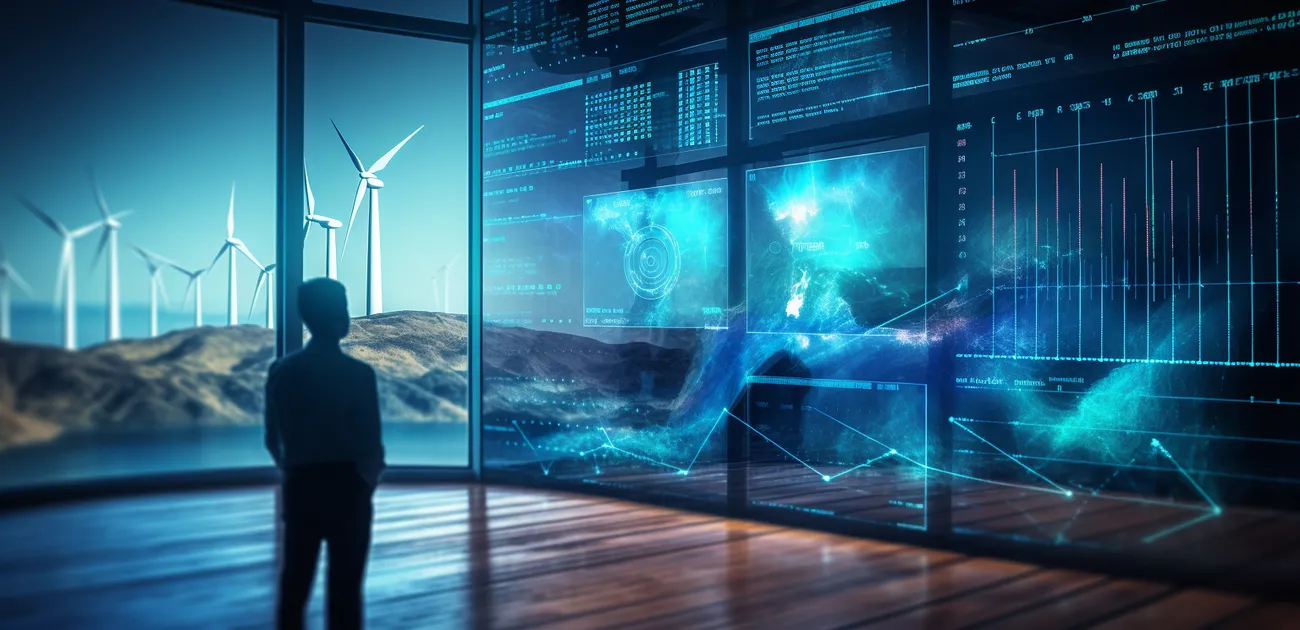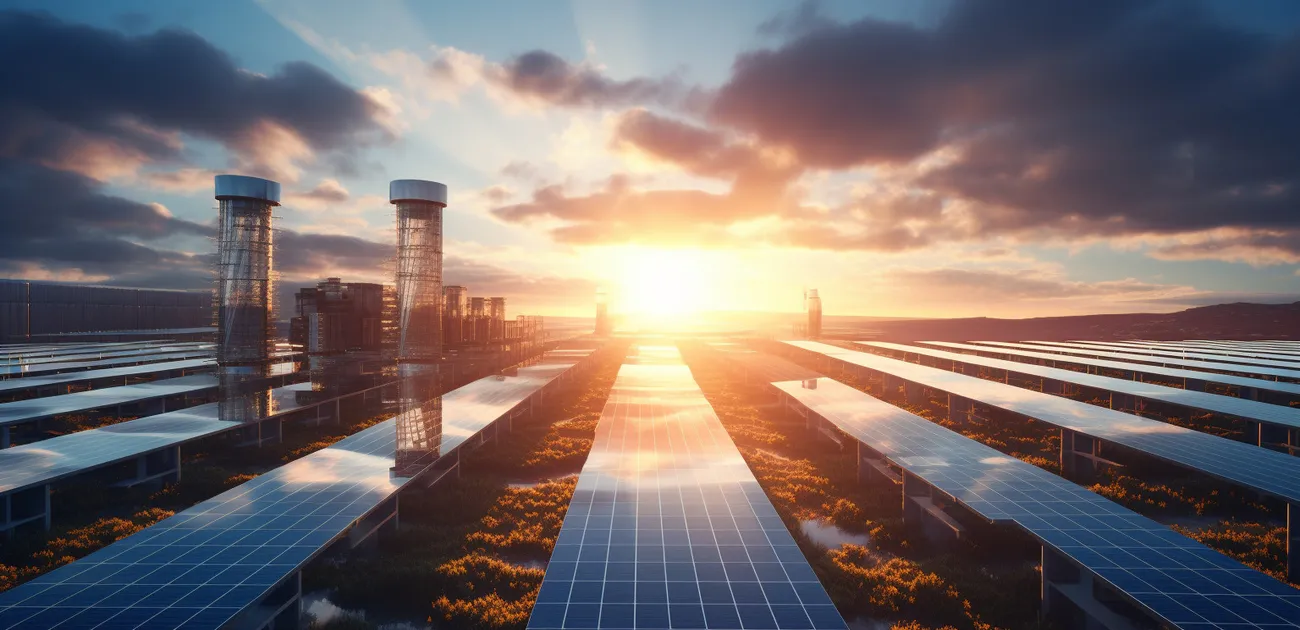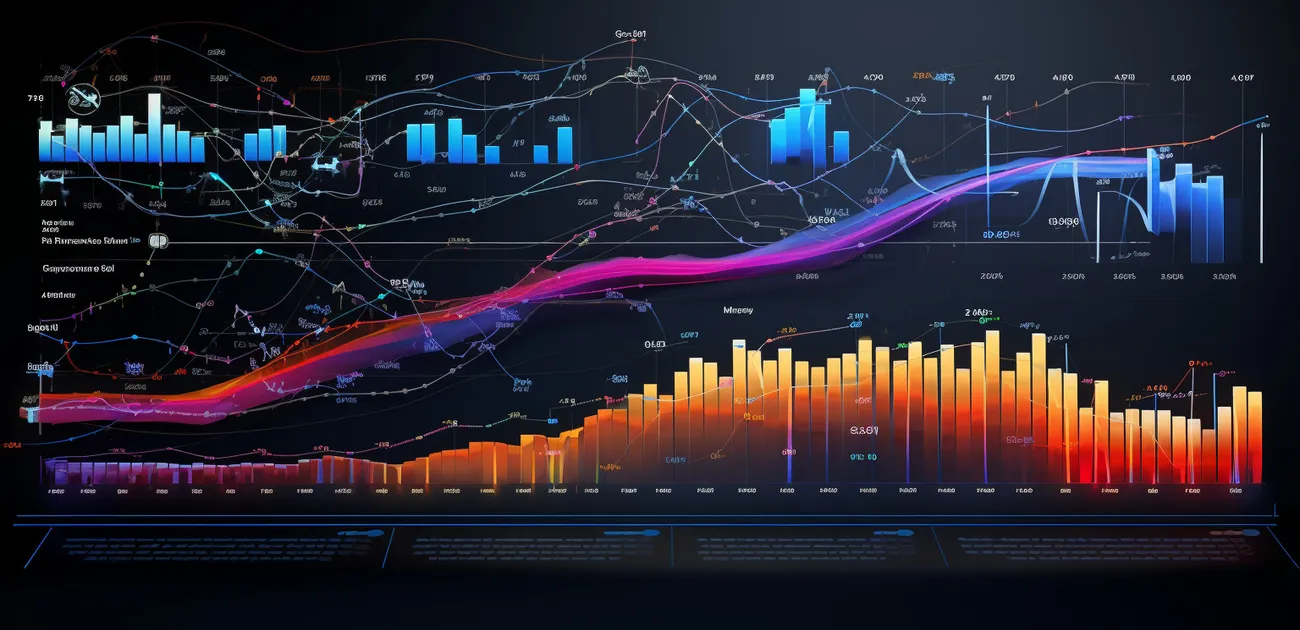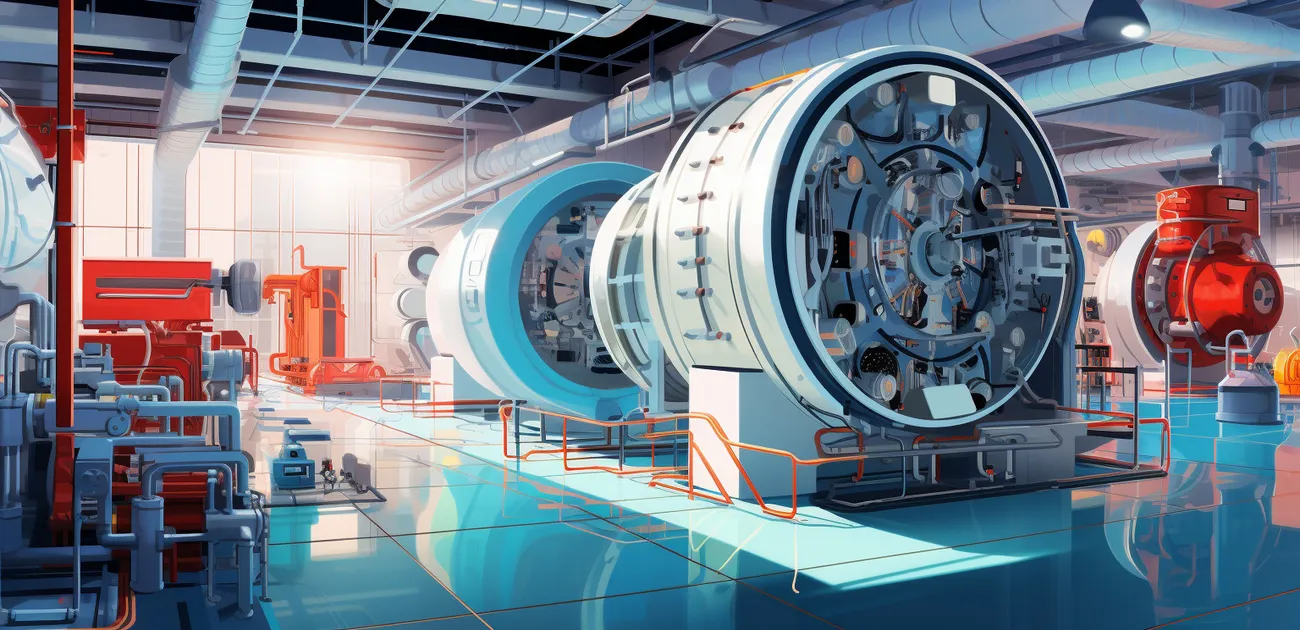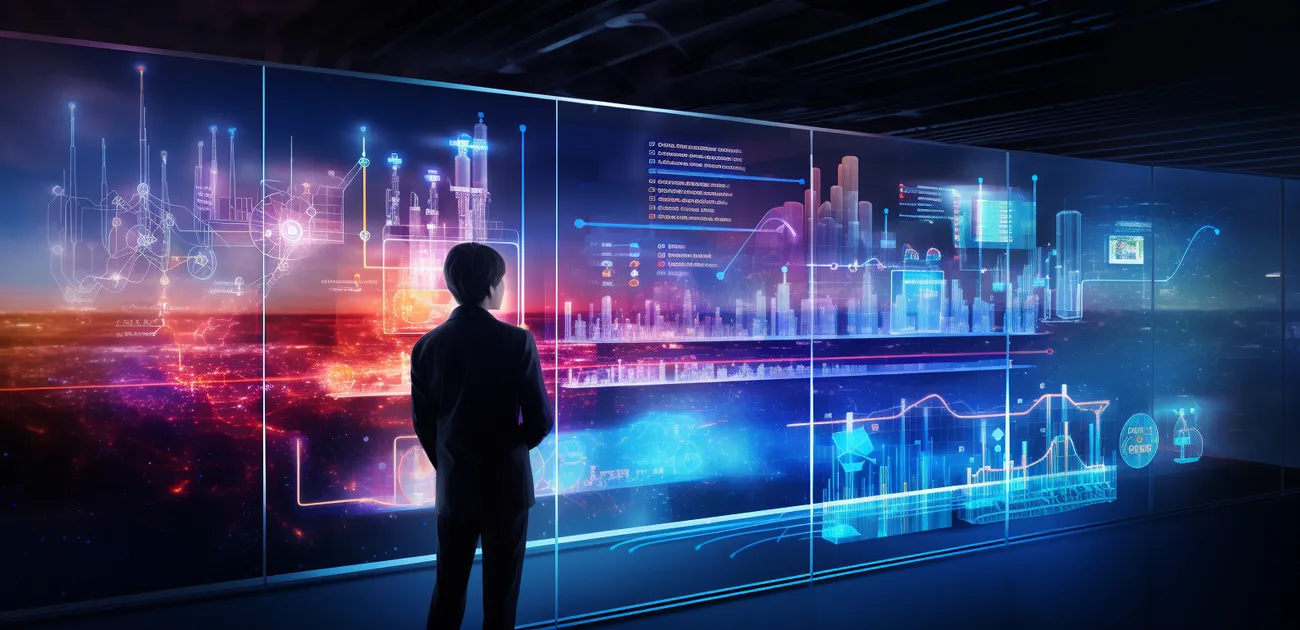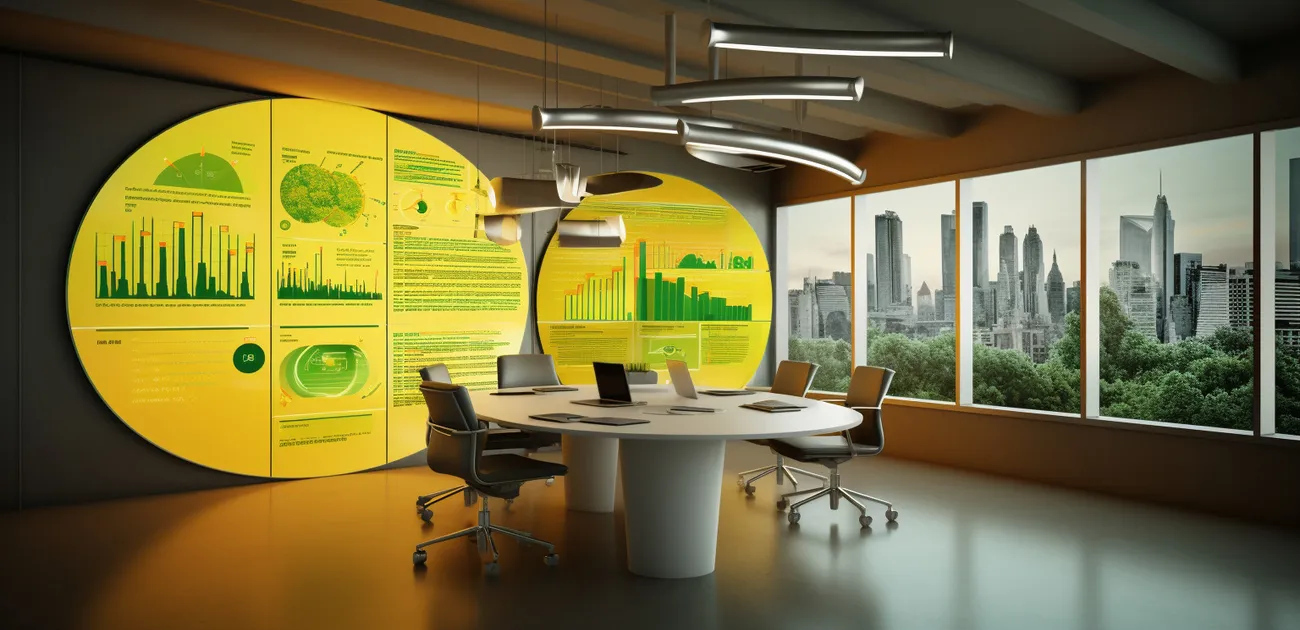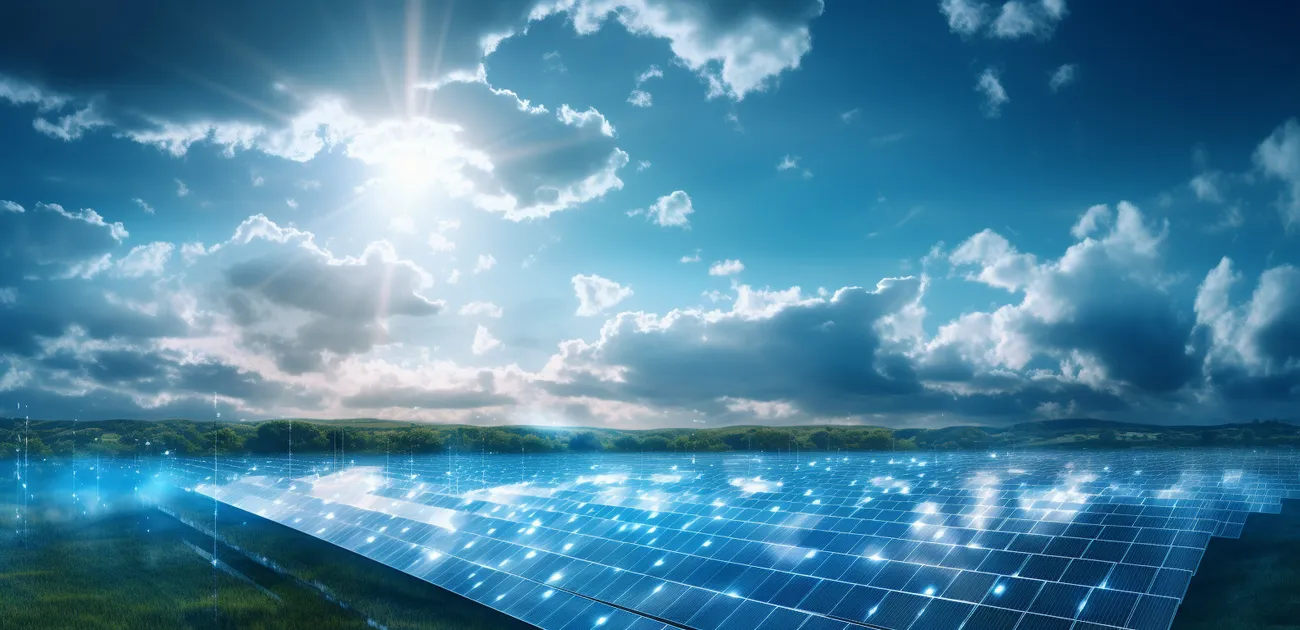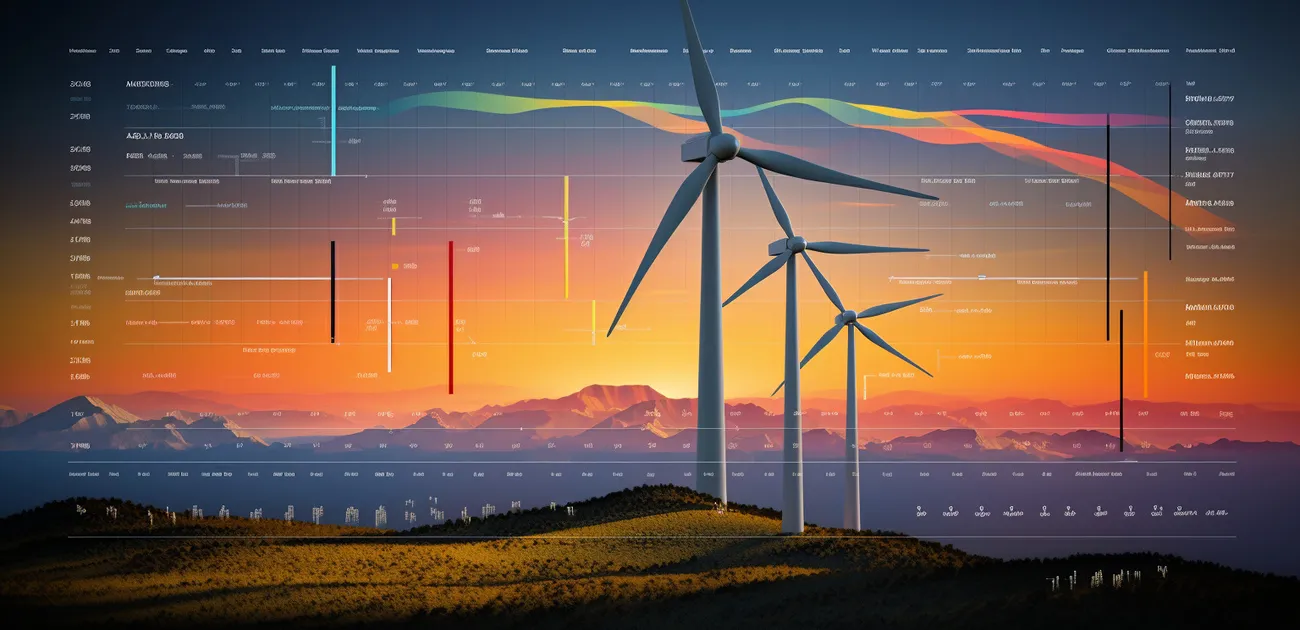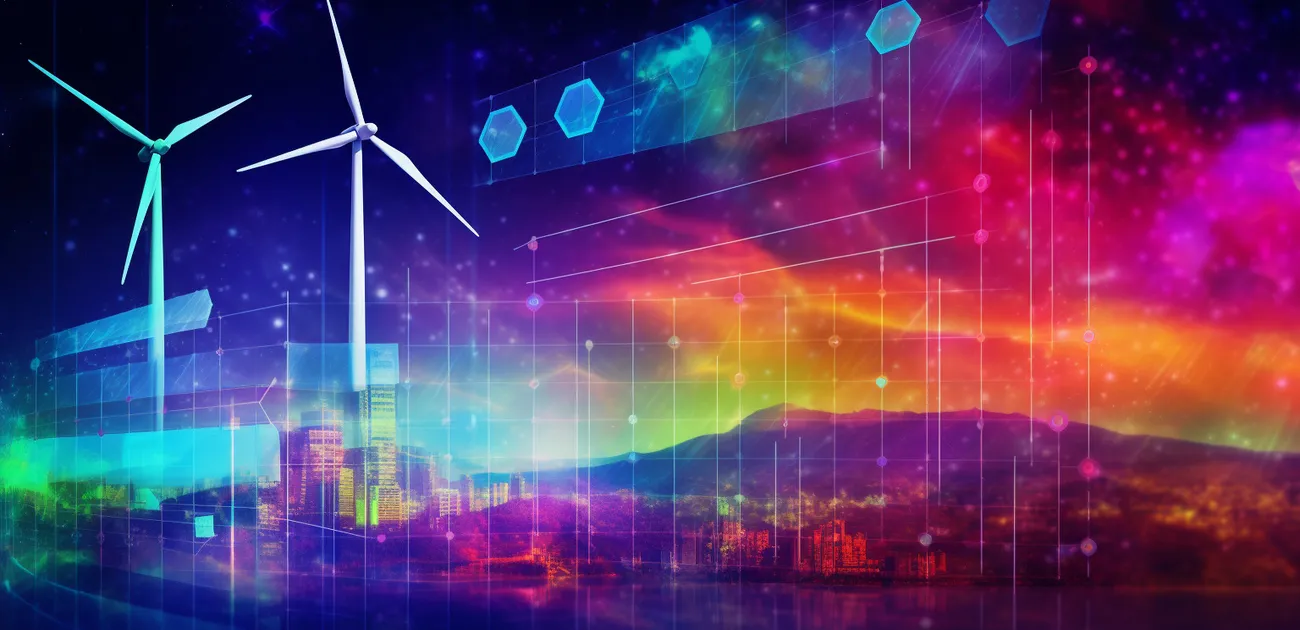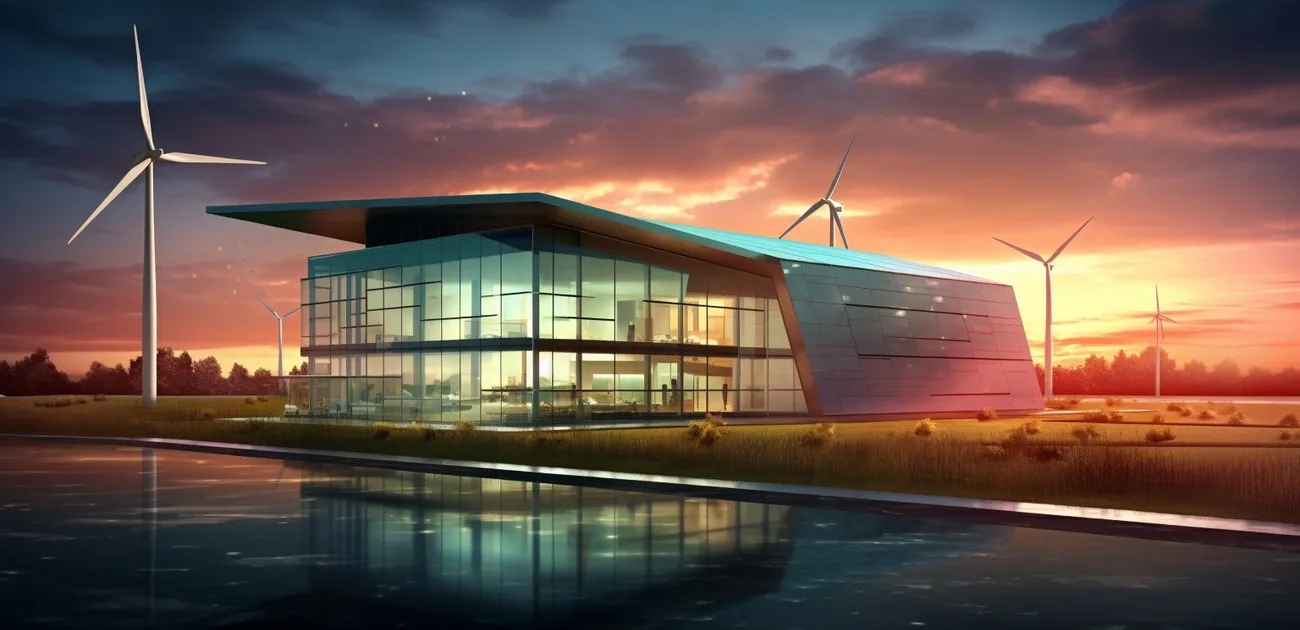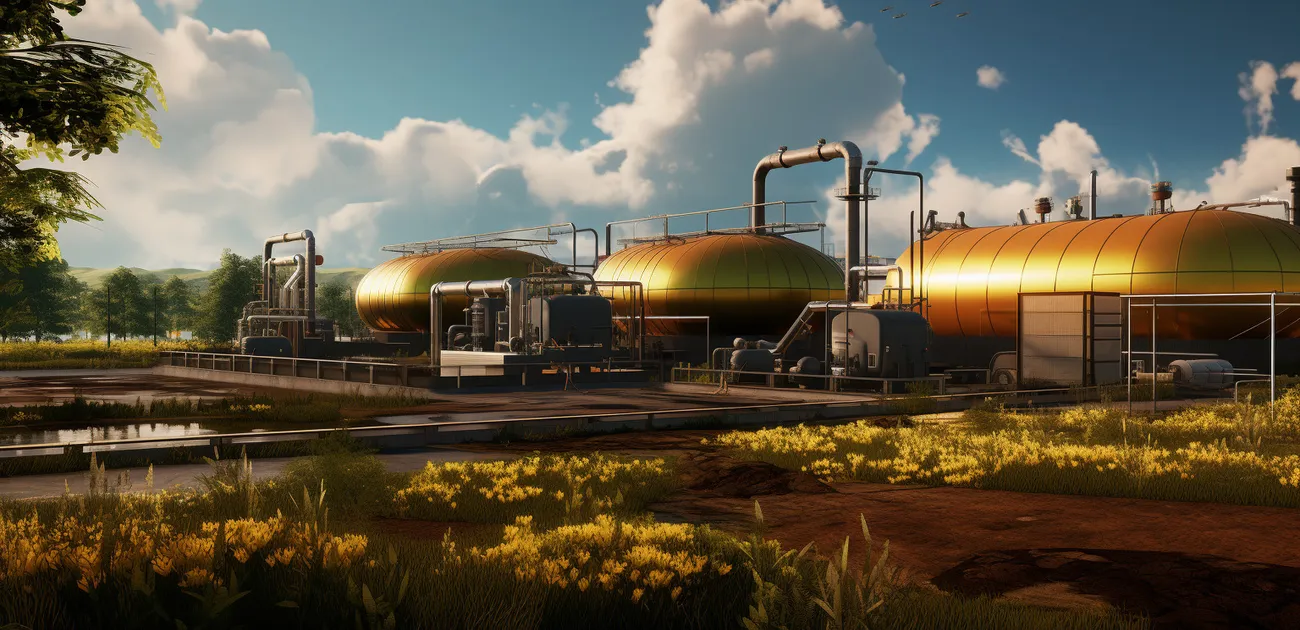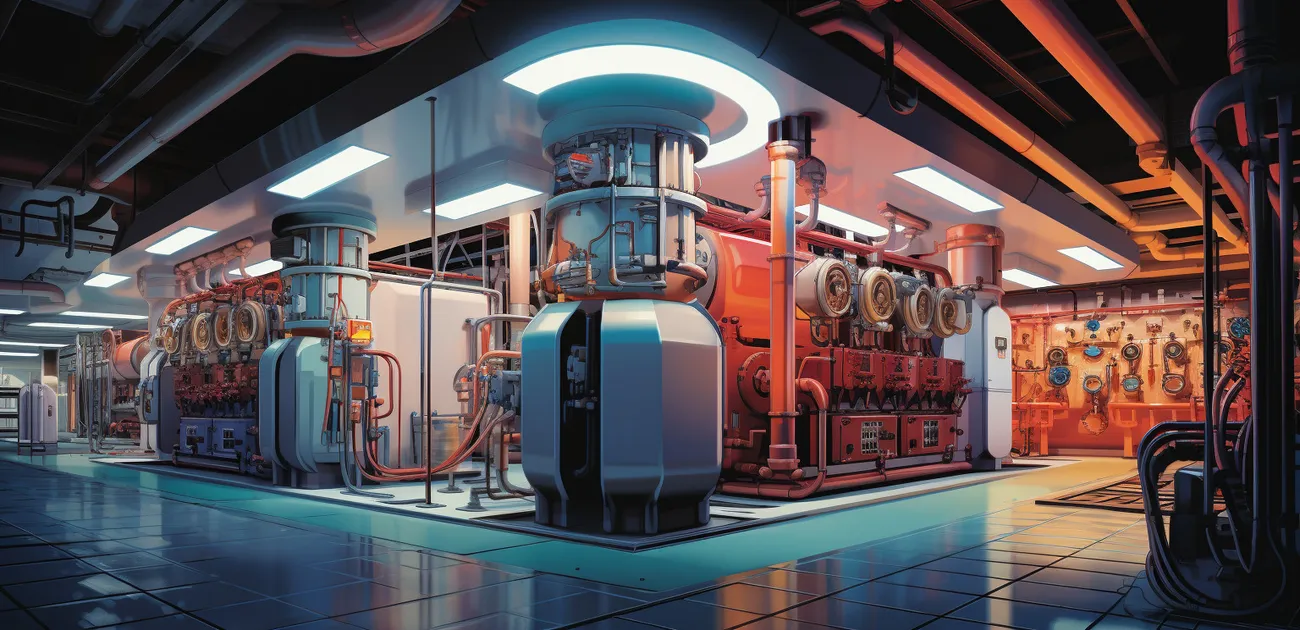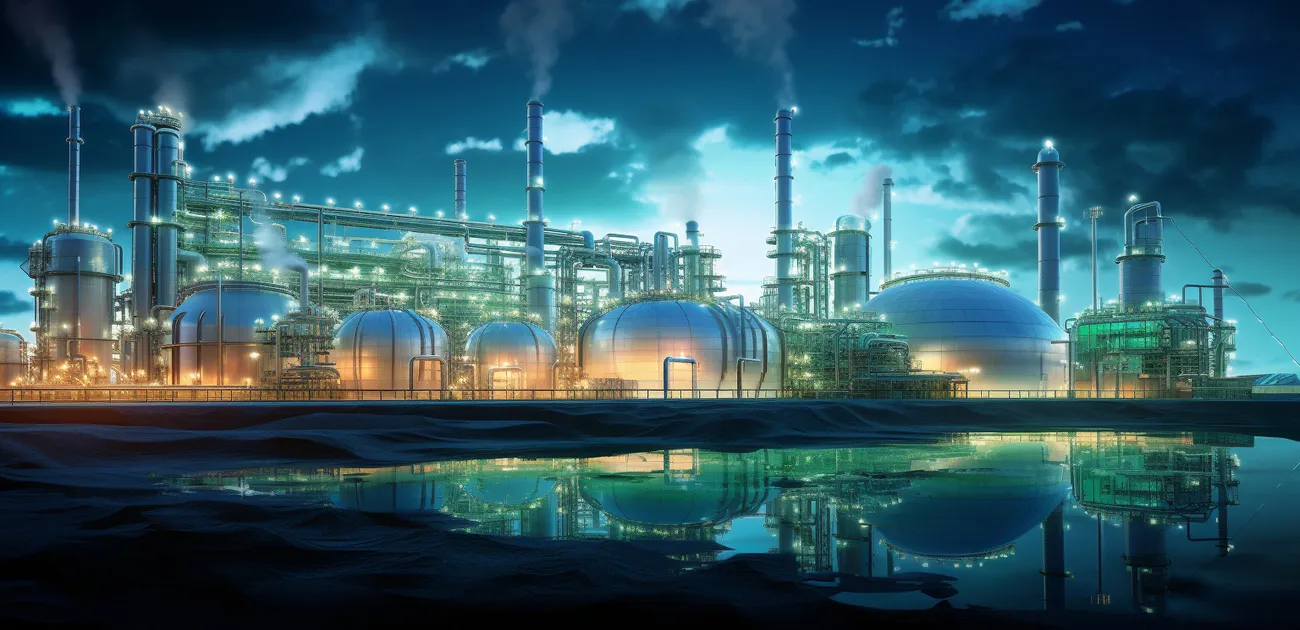Green Data Science Blog.
Biogas plants play a vital role in sustainable energy production, converting organic waste materials into valuable renewable energy. However, like any complex system, biogas plants face efficiency gaps that can hinder their performance and output. In this blog post, we will explore how data-driven solutions can help address these gaps and optimize the efficiency of biogas plants.
More Stories
Advancements in Renewable Energy Monitoring using AI and Data Analytics
Renewable energy sources such as solar, wind, and hydroelectric power play a crucial role in combating climate change and transitioning to a sustainable future. As the adoption of renewable energy continues to grow, monitoring and optimizing the performance of renewable energy systems become paramount. In recent years, advancements in artificial intelligence (AI) and data analytics have revolutionized the field of renewable energy monitoring, enabling more efficient and effective operations. This blog post explores the intersection of AI, data analytics, and renewable energy monitoring, highlighting the benefits and applications of this synergy.
Advancements in Solar Power Plant Operations through Machine Learning
Before we dive into the role of machine learning, let us first understand the basics of solar power plants. Solar power plants generate electricity by harnessing sunlight through photovoltaic (PV) panels or concentrating solar power (CSP) systems. PV panels directly convert sunlight into electricity using semiconductors, while CSP systems use mirrors or lenses to concentrate sunlight onto a receiver to generate thermal energy that drives a turbine for electricity generation.
AI-enabled Smart Grids: Empowering Renewable Energy Integration and Management
As the world strives to reduce carbon emissions and combat climate change, renewable energy sources such as solar, wind, and hydroelectric power have gained substantial importance. However, the intermittent nature of renewable energy poses unique challenges for integration into the existing power grid infrastructure. Traditional power grids were primarily designed to handle centralized power generation from fossil fuel-based plants, making it difficult to accommodate decentralized renewable energy sources. This necessitates the development of innovative solutions that can effectively manage the integration of renewable energy into the grid.
The Role of AI in Optimizing Renewable Energy Production
Renewable energy production involves harnessing energy from renewable sources like sunlight, wind, or water. Unlike traditional fossil fuel-based power generation, renewable energy offers numerous environmental benefits, including reduced greenhouse gas emissions and a lower carbon footprint. However, the variability and intermittency of renewable energy sources pose unique challenges for energy producers.
Anomaly Detection in Renewable Energy Systems: A Data Science Perspective
Renewable energy systems, such as solar and wind power, play a crucial role in our efforts to reduce carbon emissions and transition to a sustainable future. However, ensuring the efficient and reliable operation of these systems presents significant challenges. Anomaly detection, a vital component of data science, offers a promising solution to identify abnormal behavior in renewable energy systems, enabling timely intervention and maintenance. In this blog post, we will explore the application of anomaly detection techniques from a data science perspective and their importance in maintaining the performance and stability of renewable energy systems.
Anticipating Equipment Failures in Renewable Energy Infrastructure with Predictive Maintenance
Renewable energy infrastructure, such as wind turbines and solar panels, plays a vital role in our transition to a sustainable future. However, these complex systems are prone to equipment failures, which can result in costly downtime and decreased energy production. To mitigate these risks, predictive maintenance has emerged as a powerful approach to anticipate and prevent equipment failures. In this blog post, we will delve into the world of predictive maintenance and explore how it can revolutionize the maintenance practices in renewable energy infrastructure.
How Data-backed Insights Can Shape Renewable Energy Decision-making
Renewable energy has emerged as a crucial component in the global transition towards sustainable and environmentally friendly power generation. However, making informed decisions in the renewable energy sector can be challenging due to the complexity and variability of factors involved. This is where data-backed insights play a vital role. By leveraging data-driven approaches, renewable energy decision-makers can gain valuable insights that enhance their understanding of energy systems, optimize resource allocation, and drive informed decision-making.
Data Science Applications for Optimizing Wastewater Treatment Processes
Wastewater treatment is a crucial process that helps protect the environment and human health by removing pollutants from water before it is released back into natural water bodies. As the volume and complexity of wastewater increase, traditional methods of treatment face challenges in terms of efficiency and effectiveness. However, with the advancements in data science and technology, new opportunities for optimizing wastewater treatment processes have emerged. This blog post explores the applications of data science in wastewater treatment and how it can revolutionize the field, leading to improved efficiency, cost-effectiveness, and environmental sustainability.
Data Science Applications in Wastewater Treatment Facilities
Wastewater treatment is a critical process that ensures the removal of pollutants and contaminants from water before it is released back into the environment. With increasing environmental concerns and the need for sustainable practices, wastewater treatment facilities are turning to data science to improve their operations and enhance efficiency. In this blog post, we will explore the various data science applications in wastewater treatment facilities and how they are transforming the industry.
Detecting Anomalies in Renewable Energy Systems using Data Science Techniques
Renewable energy systems, such as solar and wind farms, play a crucial role in reducing carbon emissions and promoting sustainability. However, these systems are subject to various operational issues and anomalies that can impact their performance and efficiency. Detecting anomalies in renewable energy systems is of paramount importance to ensure their optimal operation and maintenance. In this blog post, we will explore how data science techniques can be applied to identify and address anomalies in renewable energy systems.
Enhancing Energy Generation with Machine Learning in Solar Power Plants
In an era of growing energy demands and environmental concerns, harnessing solar power has become an increasingly popular solution. Solar power plants offer a sustainable and renewable energy source, but maximizing their efficiency and output can be a complex task. This is where machine learning, a branch of artificial intelligence, comes into play. By leveraging data-driven algorithms and predictive models, machine learning can enhance energy generation in solar power plants. In this blog post, we will explore the various ways in which machine learning can optimize the performance of solar power plants and pave the way for a greener future.
Enhancing Wind Farm Efficiency with AI-driven Solutions
Wind energy is a rapidly growing sector, with wind farms playing a crucial role in renewable energy generation. As the demand for clean energy increases, it becomes imperative to enhance the efficiency of wind farms to maximize power output and reduce costs. Artificial Intelligence (AI) has emerged as a powerful tool to optimize wind farm operations and improve overall efficiency. In this blog post, we will explore how AI-driven solutions can revolutionize the wind energy industry.
Exploring the Intersection of AI, Data Science, and Decarbonization
In recent years, the urgency to address climate change and reduce greenhouse gas emissions has become increasingly apparent. Decarbonization, the process of transitioning to a low-carbon or carbon-free economy, is a crucial step in mitigating the impacts of climate change. One of the key drivers in achieving effective decarbonization is the intersection of artificial intelligence (AI), data science, and decarbonization itself. This blog post explores the fascinating ways in which AI and data science are contributing to the decarbonization efforts across various sectors.
Exploring the Connection Between AI and Decarbonization Efforts
In recent years, the urgency to combat climate change and reduce greenhouse gas emissions has reached unprecedented levels. One promising avenue for achieving decarbonization is the intersection of artificial intelligence (AI) and sustainability efforts. By leveraging the power of AI technologies, we can unlock innovative solutions to address the challenges posed by climate change. This article explores the connection between AI and decarbonization efforts, highlighting the potential of AI to drive transformative change and create a sustainable future.
Financial Forecasting for Renewable Energy Projects: A Data-driven Approach
In todays rapidly evolving energy landscape, renewable energy projects play a vital role in meeting sustainability goals. However, these projects require accurate financial forecasting to ensure their viability and long-term success. This blog post explores the significance of financial forecasting for renewable energy projects and highlights the benefits of employing a data-driven approach.
Financial Planning for Renewable Energy Projects: A Data-centric Approach
In the realm of sustainable development, renewable energy projects play a crucial role in reducing greenhouse gas emissions and combating climate change. These projects encompass various sources such as solar, wind, hydro, and geothermal energy. While the environmental benefits of renewable energy are widely recognized, the financial aspects of such projects are equally important for their successful implementation. This blog post explores the significance of financial planning in renewable energy projects and introduces a data-centric approach to enhance decision-making.
Harnessing Solar Energy Efficiency with AI-powered Tools
Solar energy is derived from the radiant light and heat emitted by the sun. It is a virtually limitless source of power that can be harnessed through photovoltaic (PV) panels or solar thermal systems. PV panels convert sunlight directly into electricity, while solar thermal systems capture the suns heat to generate power or produce hot water.
Improving Security in Renewable Energy Facilities with Intrusion Detection
Renewable energy facilities, such as solar farms, wind farms, and hydroelectric plants, play a critical role in the global energy landscape. These facilities often consist of valuable equipment, control systems, and sensitive data that require protection against unauthorized access, sabotage, and cyber-attacks. Any compromise to the security of these facilities can result in significant financial losses, operational disruptions, and potential harm to the environment.
Innovations in Wind Farm Operations through Machine Learning
Before delving into the role of machine learning in wind farm operations, it is essential to understand the various aspects of managing a wind farm. A wind farm comprises multiple wind turbines, interconnected electrical infrastructure, and sophisticated control systems. Efficiently managing these components is essential to ensure optimal power generation, minimize downtime, and improve overall profitability.
Leveraging AI for Solar Power Plant Optimization
AI technology encompasses a range of techniques, including machine learning, predictive analytics, and data mining, which are applied to vast amounts of data collected from solar power plants. By analyzing this data, AI algorithms can identify patterns, make accurate predictions, and optimize the plants operations. Here are some key areas where AI contributes to solar power plant optimization:
The Role of Machine Learning in Maximizing Energy Yield from Renewable Sources
Renewable energy sources such as solar, wind, and hydro power play a crucial role in addressing the global energy crisis and mitigating the effects of climate change. However, maximizing the energy yield from these sources can be challenging due to various factors such as weather variability, intermittent generation patterns, and complex system dynamics. In recent years, machine learning (ML) has emerged as a powerful tool for optimizing renewable energy systems and improving energy production efficiency. This blog post explores the role of machine learning in maximizing energy yield from renewable sources and highlights its potential applications and benefits.
Optimizing Wind Farm Performance through Advanced Data Analytics
Wind energy has emerged as a significant source of renewable power generation. Wind farms, consisting of multiple wind turbines, play a vital role in harnessing wind energy. However, optimizing the performance of wind farms is crucial to maximize energy production and ensure operational efficiency. In this blog post, we will explore how advanced data analytics can be leveraged to optimize wind farm performance.
Overcoming Challenges in the Renewable Energy Industry with Data Science
Data science involves the collection, analysis, and interpretation of large volumes of data to extract meaningful insights and make informed decisions. In the renewable energy industry, data science can play a transformative role by leveraging advanced analytics techniques and machine learning algorithms to optimize renewable energy generation, improve resource allocation, enhance grid integration, and enable predictive maintenance of renewable energy assets.
Predictive Maintenance for Renewable Energy Infrastructure: Benefits and Implementation
Predictive maintenance is a proactive approach that utilizes advanced data analytics and condition monitoring techniques to detect potential failures and perform maintenance activities before they lead to costly downtime. Traditional maintenance practices, such as reactive or preventive maintenance, are often based on fixed schedules or waiting for equipment failures to occur. These approaches can result in unnecessary downtime, high maintenance costs, and inefficient asset utilization. By implementing predictive maintenance in renewable energy infrastructure, operators can gain valuable insights into the condition and performance of critical components, enabling them to schedule maintenance activities at the most opportune times. This approach reduces unplanned downtime, minimizes maintenance costs, extends asset lifespan, and ensures optimal energy generation.
Real-time Monitoring and Control in Biogas Plants using AI-driven Solutions
Biogas plants play a crucial role in sustainable energy production, utilizing organic waste materials to generate renewable biogas. However, efficient operation and optimization of biogas plants require constant monitoring and control of various parameters. Real-time monitoring and control using AI-driven solutions offer a promising approach to enhance the performance, reliability, and economic viability of biogas plants. In this blog post, we will explore the significance of real-time monitoring and control in biogas plants and the role of AI-driven solutions in achieving these objectives.
Revolutionizing SCADA Systems: Exploring AI-Driven Solutions for Enhanced Efficiency
Discover how AI-driven solutions are revolutionizing SCADA systems, enhancing efficiency, and optimizing industrial processes.
Safeguarding Renewable Energy Facilities: A Look into Intrusion Detection Systems
Before diving into the security aspects, it is essential to understand the nature of renewable energy facilities. Renewable energy harnesses natural resources, such as sunlight, wind, or water, to generate power. These facilities consist of intricate systems, including energy converters, power storage units, and transmission infrastructure. Their distributed nature, reliance on advanced technologies, and integration with the electrical grid make them attractive targets for both physical and cyber threats.
The Future of Renewable Energy: AI and Data Science in Action
The global shift towards renewable energy sources has gained significant momentum in recent years, driven by the need to reduce greenhouse gas emissions and mitigate the effects of climate change. As the world transitions away from fossil fuels, new technologies are emerging to accelerate the adoption and efficiency of renewable energy systems. Among these technologies, artificial intelligence (AI) and data science are playing crucial roles in shaping the future of renewable energy.
The Future of SCADA: Harnessing AI for Intelligent Automation and Monitoring
In the ever-evolving landscape of industrial automation, SCADA (Supervisory Control and Data Acquisition) systems have played a crucial role in monitoring and controlling various industrial processes. However, as technology advances and the demand for more intelligent and efficient systems increases, the integration of artificial intelligence (AI) into SCADA systems emerges as a significant trend. This blog post delves into the future of SCADA, exploring the potential of harnessing AI for intelligent automation and monitoring.
The Role of AI in Driving Sustainable Practices in the Renewable Energy Sector
Before delving into the role of AI in the renewable energy sector, it is essential to understand the significance of renewable energy itself. Renewable energy sources such as solar, wind, hydro, and geothermal power offer several advantages over traditional fossil fuels. They are clean, abundant, and can be harnessed without depleting natural resources or causing significant environmental harm. Renewable energy technologies are essential for reducing greenhouse gas emissions, improving air quality, and fostering energy independence.
The Synergy Between AI and Sustainable Infrastructure Development
Sustainable infrastructure development refers to the process of planning, designing, constructing, and maintaining infrastructure projects that meet the needs of the present generation without compromising the ability of future generations to meet their own needs. It involves integrating social, economic, and environmental considerations into infrastructure projects, aiming to create long-term value while minimizing negative impacts on the planet.
Understanding the Impact of AI on Biogas Plants
Artificial Intelligence (AI) has revolutionized numerous industries, and one sector that is experiencing its transformative potential is biogas plants. In this blog post, we will explore the impact of AI on biogas plants, uncovering the benefits and challenges associated with its implementation.
Unlocking the Power of AI for Sustainable Infrastructure
Artificial intelligence refers to the development of intelligent machines that can simulate human intelligence and perform tasks that typically require human intervention. When applied to sustainable infrastructure, AI enables us to gather, analyze and utilize vast amounts of data to make informed decisions and optimize various aspects of urban development. Let us explore some key areas where AI can make a significant difference.
